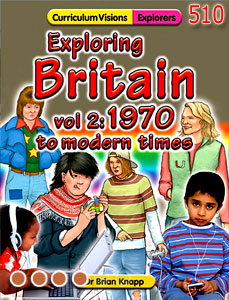Television began as people understood better how electricity works. In 1897, British scientist J. J. Thomson found out how to change the direction of waves called cathode rays using magnets. This was developed to allow people to make a cathode ray tube. The rays went through the tube and hit a front screen which had been coated with a material (phosphor) that glowed when rays hit it. So where there were rays it glowed white, and where there were no rays it stayed black. But it took until 1922 to make the tube bright enough to be useful.
What was now needed was a way of sending changing information to the screen. This was done by sending lines of information, the first line to the top of the screen, the next line just below it and so on until a complete picture was built up. The scanning across the tube was then repeated. To make it work without the eye being able to detect what was going on, the scanning has to be very fast, at least 50 scans a second over more than 400 lines for good results.
British scientist, Philo Farnsworth gave the world's first public demonstration of an all-electronic television system, using a live camera, in Philadelphia in 1934.
In 1936, a 405-line broadcasting service started at the BBC studios in London. This was the world's first regular television service. On 2 November 1936, the BBC began transmitting the world's first public regular service from north London. It therefore claims to be the birthplace of TV broadcasting.
On Armistice Day 1937 people could watch the King laying a wreath at the Cenotaph in London. It was the world's first live outside broadcast.
But everyone wanted to produce colour television. British inventor John Logie Baird made the world's first local colour transmission on July 3, 1928. He also made the world's first colour broadcast on February 4, 1938, sending it between two places in London.
The Bell Laboratories in the USA were also doing much the same thing. NBC made its first test of colour television in 1941.
But all of these systems needed coloured discs spinning at high speed. Baird started work on an electronic system in 1940. He demonstrated the first colour television system by 1944, but he died in 1946.
Progress was then almost entirely in the USA. The first electronic colour sets appeared in 1953, but it took over ten years for colour to be accepted, because the sets were so expensive.
Early colour sets were very large and heavy, but by 1972 more colour TV sets were being sold in the U.S. than black and white.
In Europe colour broadcasts started much later, about 1967, but sets were then cheap enough for them to be bought in large numbers. So by the mid 1970s almost all television stations in Europe, the U.S. and Japan were in colour.
All of these sets used cathode ray tubes, meaning that they used a lot of power, got hot, were very deep and very heavy. Digital TVs use a completely different system, using a panel of tiny transistors (called light-emitting diodes, or LED's) that produced colour directly. These were first introduced in the 1990s. As a result, screens today are flat, as well as large and at the same time lightweight.





